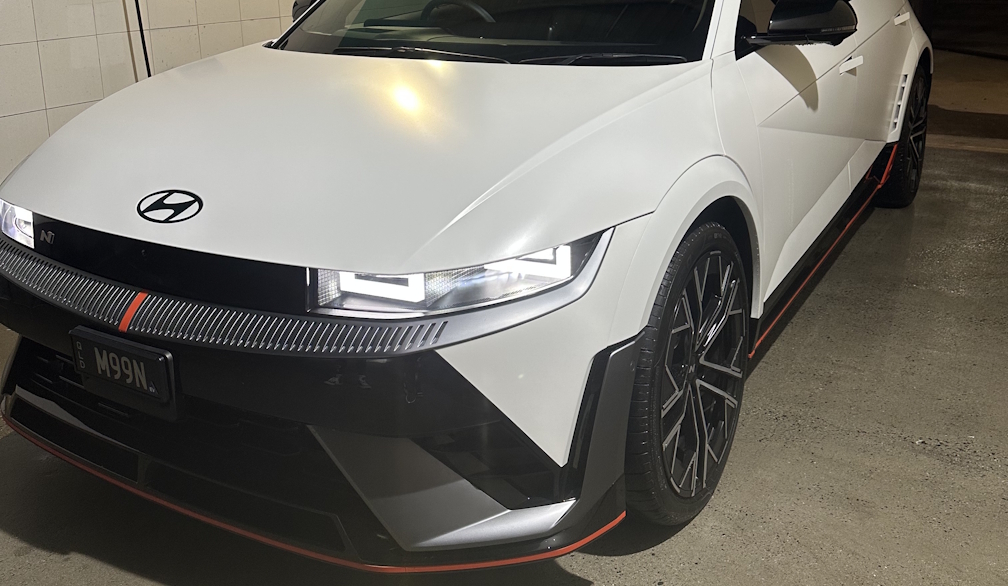NSW leads the EV charge – but there’s one big roadblock
- Written by The Times

New research from national insurance provider Youi reveals that while interest in electric vehicles (EVs) is growing, most Australians still lack the confidence and knowledge to make the switch.
Despite the buzz around EVs, only 7% of Aussies have ever owned one, and two-thirds have little or no confidence in their understanding of key aspects of EV ownership—from charging times and battery range to insurance and resale value.
Experience drives confidence, but most Aussies haven’t had it
The Youi EV Data Digest report study, conducted with more than 1,000 Australians*, shows there’s a clear link between experience and confidence. 78% of EV owners say they’re likely to buy another, compared to just 22% of the general population. But with such a small portion of Australians having ever driven or owned an EV, most drivers don’t know what they’re missing out on.
So, what’s pulling the handbrake? The top barriers for EV adoption include purchase cost (53%), cost of installing home charging stations (48%) and the availability of public charging stations (47%).
Confidence is also low when it comes to understanding resale value (14%), repair costs (14%), and the government rebates available (11%), suggesting that education and myth-busting are key to unlocking broader adoption.
Youi’s Head of Product – Vehicle and Leisure, Marni Jackson, said a lack of information and education around EVs could be contributing to low purchase intent.
“The research shows that while many Australians are still uncertain about EVs, they’re actively considering them,” Marni said.
“In fact, 69% say they need more information before they feel confident purchasing, yet 55% also say sustainability is a key factor in decision-making,” she said.
Fuel savings and sustainability are turning heads
Aussies are most motivated by lower fuel costs (51%), lower maintenance costs (43%) and longer driving ranges (41%).
Millennials (32%) and Gen Z (27%) are leading the charge, with younger generations more open to EVs as their next vehicle. However, 61% of Aussies overall still prefer to stick with petrol or diesel.
According to Marni, there’s also a perception gap around insurance. 56% believe EVs are the most expensive vehicle to insure, but recent Youi quoting data suggests this may not be the case**. Across the industry, the cost of car insurance has been trending upwards due to the increase of modern vehicles with advanced technology, labour shortages, and cars featuring more replacement parts.
“There’s a lot of misinformation out there. When comparing Youi’s insurance premium data, EVs and regular vehicles often fall within the same initial price range, before comparing individual circumstances. The good news is, the more people get to experience EVs, the more confident they become in these vehicles,” Marni said.
Youi’s data shows EV insurance quotes have grown from 0.66% in 2021 to 2.78% in 2025, but growth is slowing. Still, EVs are outperforming hybrids in quote growth (14.01% vs. 13.78%) and outpacing regular vehicles, which are in decline***.
According to Scott Nargar, Hyundai’s Senior Manager of Future Mobility and Government Relations, charging anxiety and regional disparities are major barriers.
“We’re seeing clear differences across states when it comes to EV readiness,” Scott said.
“For example, NSW residents are the most likely to consider an EV next (26%), while Queenslanders (15%) and Victorians (22%) are more hesitant, largely due to cost concerns. In fact, 58% of Victorians and 56% of Queenslanders surveyed cited purchase price as their biggest barrier, whereas NSW residents also weigh public charging access equally as their biggest barrier with purchase cost (50%).
“These differences show that EV adoption isn’t just about national trends, it’s about local infrastructure, policy, and consumer perceptions. Tailored education and support in each state will be key to driving uptake,” Scott said.
Scott adds that for many Aussies, it’s not just about cost, it’s about confidence. For those not yet ready to make the jump to an EV, Hybrids may just be the stepping stone technology they need and according to Scott, there’s never been a better time to make the switch.
“We know some Aussies remain cautious, but the reality is things are improving rapidly, from charging networks to affordability. This is just the beginning,” Scott said.
To read more about Youi’s EV Data Digest report, visit The Road to Electric: Australia’s EV Attitudes in 2025. Or to find out more about Youi Insurance, visit https://www.youi.com.au/car-insurance.

















